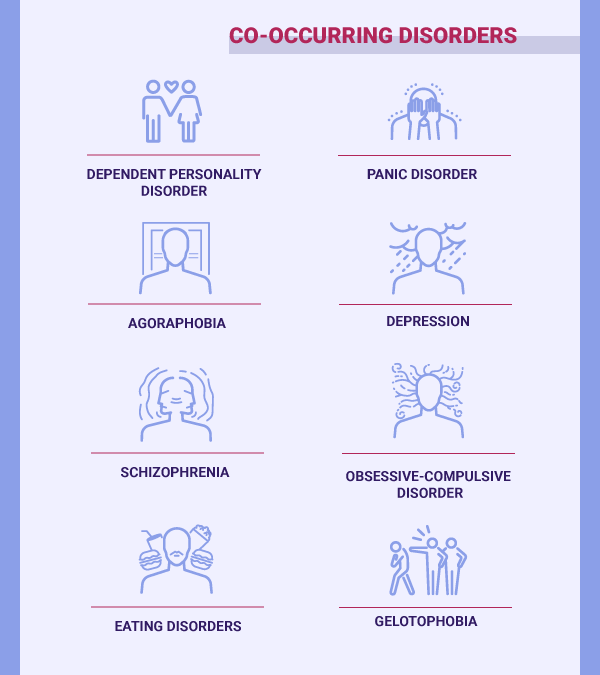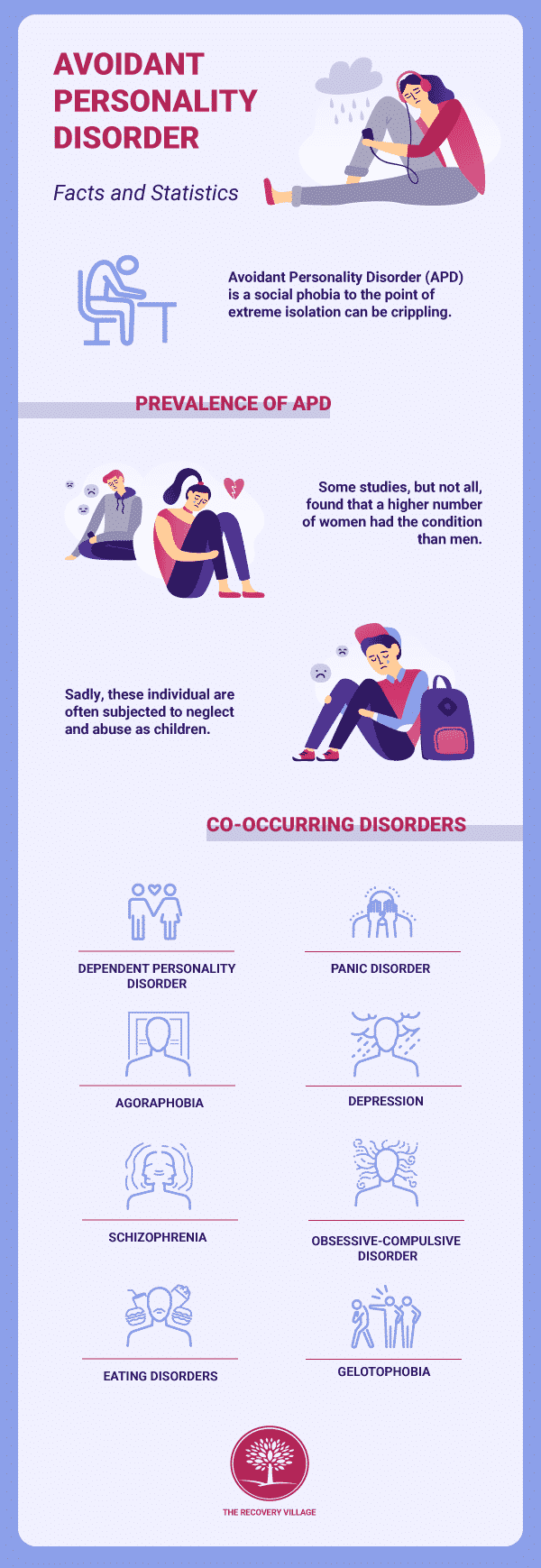People with avoidant personality disorder avoid social interaction because they fear rejection. Learn more about who the condition affects through avoidant personality disorder statistics.
Social phobia to the point of extreme isolation can be crippling. More severe than social anxiety disorder,avoidant personality disordercan keep people inside for days. People who have it long for acceptance, yet are stiflingly afraid of rejection. Social interactions may be nearly impossible for these individuals, making it difficult to hold a job or maintain a healthy support network. Avoidant personality disorderfacts and statisticsfrom the latest research can help raise awareness of this debilitating condition.
Avoidant Personality Disorder Diagnosis
TheAmerican Psychological Association(APA) classifies avoidant personality disorder as a cluster C personality disorder. These are personality disorders that involve fear or anxiety. The APA and theWorld Health Organization(WHO) list these diagnostic criteria for avoidant personality disorder:
- Persistent and pervasive feelings of stress and apprehension
- Belief that oneself is socially inept, unappealing or otherwise inferior to others
- Excessive worry about being criticized or rejected in social situations
- Unwillingness to get involved with people unless they are certain of being liked
- A need for security that interferes with daily life and activities
- Avoidance of social or job-related activities that involve significant interaction with other people because of fear of criticism, disapproval or rejection
- Reluctance to try new things or take personal risks because of a fear of being embarrassed
Prevalence of Avoidant Personality Disorder
Little research has been conducted on avoidant personality disorder. The few studies that have been done on it have come up with different numbers for itsprevalence; however, a few trends have been identified. An estimated1.5–2.5%of people in the United States have avoidant personality disorder. However, some studies haveestimated its incidenceto be as low as 0.8% or as high as 9.3%. Some studies, but not all, found that a higher number ofwomenhad the conditionthan men.

Avoidant Personality Disorder in Children
Avoidant personality disorderdevelops throughout childhood. Childhood trauma, negative experiences, difficulty making friends and poor relationships with adults can severely damage a person’s emotional and social confidence. The disorder fully manifests when a child who had these negative experiences becomes an adult and is incapable of functioning well in normal social situations.
New Year, New Beginnings.
Whether you are struggling with addiction, mental health or both, our expert team is here to guide you every step of the way. Don’t wait— reach out today to take the first step toward taking control of your life.
A person’s early childhood experiences have a significant impact on their risk of developingavoidant personality disorder. Positive interactions and relationships with parents are crucial for building social confidence and relationship-making skills. People with avoidant personality disorder often had parents or guardians who were disapproving and guilt-tripping while not being very affectionate or encouraging. Sadly, these individuals are often subjected toneglect and abuse as children.
Avoidant Personality Disorder and Co-Occurring Disorders
People with avoidant personality disorder frequently have other psychological conditions. Symptoms of this disorder often overlap with and sometimes co-occur alongside conditions like social anxiety disorder.
For a while, avoidant personality disorder was thought to be a type ofsocial anxiety disorder. However, it’s now recognized that they are two different disorders, but are similar in many ways and often co-occur in the same people. Somewhere between29 and 48%of people with avoidant personality disorder also meet the diagnostic criteria of social anxiety disorder.
Other mental health disorders that commonly co-occur with avoidant personality disorder include:
- Dependent personality disorder
- Panic disorder
- Agoraphobia
- Depression
- Obsessive-compulsive disorder
- Schizophrenia
- Eating disorders
- Gelotophobia(fear of being laughed at)

Avoidant Personality Disorders and Substance Abuse
Like so many other mental health disorders, people with avoidant personality disorder may have a higher chance of developing asubstance use disorder. Extreme stress and isolation can cause people to turn to alcohol or drugs for comfort or escape. The rate of avoidant personality disorder is especially high (12–35%) among people with co-occurringsubstance use and eating disorders.
Avoidant Personality Disorder Treatment and Prognosis
Psychotherapy is currently the best course oftreatment for avoidant personality disorder. Unfortunately, treatment can be difficult because patients with the condition tend to avoid attending doctor appointments or seeking help from others. Atreatment planoften involvescognitive-behavioral therapyto improve social skills and treatment of other co-occurring disorders.
Currently, no pharmaceutical medications are available to address avoidant personality disorder. However, some can be used to treat common co-occurring disorders, such as anxiety or depression.
Treating avoidant personality disordertakes a lot of hard work, but it can be quite successful. Abouthalfof all patients no longer meet diagnostic criteria for the disorder after two years of treatment. Thisprognosisgives good hope for recovery for patients with the condition.
Substance use disorders often are made worse by mental health issues, including avoidant personality disorder. If you or a loved one are struggling with a personality disorder or other mental health condition along with an alcohol or drug addiction, specialized help is available.Call The Recovery Village todayto get started.









